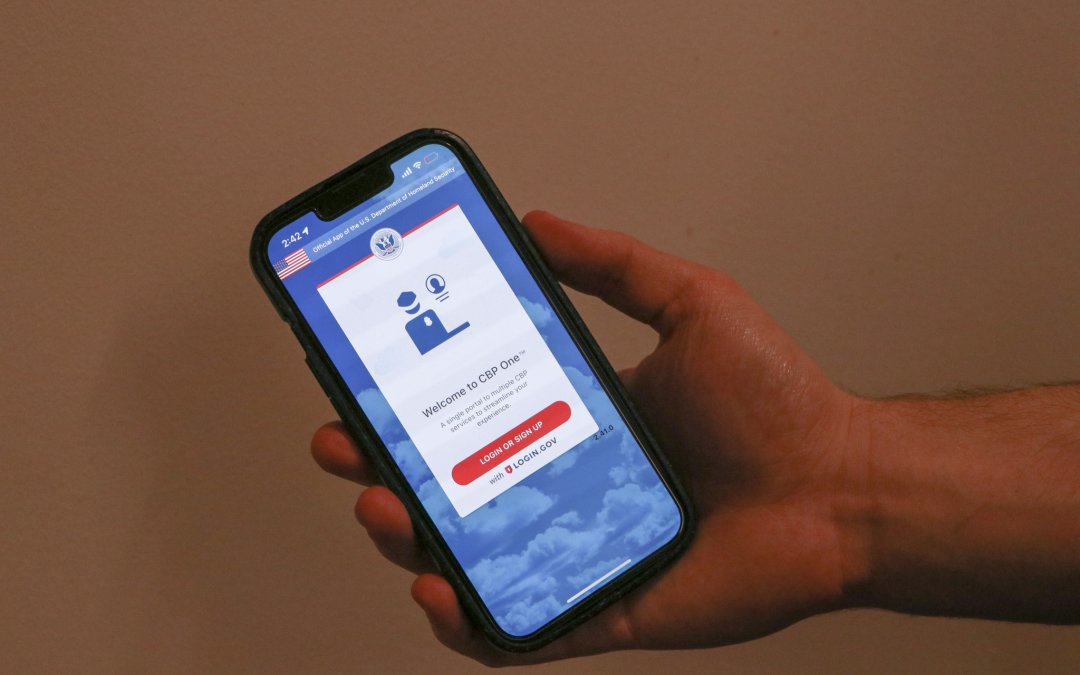WASHINGTON — In early January the Biden administration proposed new rules for asylum seekers, requiring them to use an app to make an appointment for entry at the border. Modernizing the asylum process has been a priority for the president, but the forced use of the app, called CBP One, is creating more issues for migrants according to some humanitarian organizations.
Customs and Border Patrol launched the app in 2020 for inspection appointment requests for carriers and travelers with I-94 forms. Biden’s plan, which was implemented as the Trump-era Title 42 policy was expected to end, expanded its use to asylum seekers from Nicaragua, Haiti, Venezuela and Cuba, but barriers remain for migrants who don’t have access to modern technology or face language barriers, according to Valentina Hiegemann the International Refugee Assistance Project U.S.-Mexico border coordinator.
“(CBP One) is leaving out a large, large number of people who can be very vulnerable and who don’t have access,” Hiegemann said. “Essentially, (they) are only providing this access to seek asylum to a small part of this population.”
Hiegemann said the asylum seeking process was already limited before the use of the app under the Title 42 policy. Under the policy, border officials could expel any migrants seeking asylum across the border on public health grounds and the only way around it is through organizations identifying asylum seekers and requesting exemption to Title 42 on their behalf. Now, because of the app, the challenges have grown because organizations no longer have the responsibility to request an exemption on their behalf, migrants themselves must go through the app.
She also said organizations can no longer highlight critical cases and fasttrack the most vulnerable people seeking asylum to receive protection across the border. The only way is through the app which has no option for flagging urgent claims.
Hiegemann said one of IRAP’s clients is a woman nine-months pregnant with twins who hasn’t been able to get an appointment through the app for the past five weeks. IRAP can’t do anything to help her get an appointment, she said.
“You have many, many people who are extremely vulnerable who are forced to wait in dangerous conditions in Mexico,” Hiegeman said.
With the app, Hiegemann said the process is anything but streamlined for asylum seekers.
Previously the organization was able to get protection across the border for all of their clients, now Hiegemann said not a single client has been able to schedule an appointment through the app.
For many, the issue is both accessing the app and using it. To do so requires wifi or cell service and overcoming language barriers and technical errors.
Thomas Cartwright, a volunteer with Witness at the Border, said the app currently has multiple languages including Spanish and Portuguese, but it is not fully translated into Haitian Creole, which is one of primary groups the app is supposed to help.
Cartwright said even if CBP fixed the technical problems, equitable issues remain.
“The issue is if they fixed every technical aspect of it, they still can never fix the equity issues, the equity issues of race and language,” he said.
With Biden’s plan to lift Title 42 on May 11, when the COVID-19 public health emergency ends, DHS announced a proposal to continue what advocacy groups have called an “asylum transit ban” and continue the use of CBP One for asylum seekers. Cartwright said he is disappointed and disheartened by the administration’s decision.
“An alternate path needs to be established, and we were told that would be established and this rule changes that, it’s yet another betrayal,” Cartwright said.
In the Senate, several Democrats have brought up concerns about the security of the app. Sen. Ed Markey (D-Mass.) called on the Department of Homeland Security to drop the app. Sens. Alex Padilla (D-Calif.) and Dick Durbin (D-Ill.) wrote a letter to the president urging him to find solutions to several issues in his immigration plan, including fixing issues with the app.
Hiegemann said the solution to the issue is much bigger than the app. She said the Biden administration should focus on restoring a humane border policy and a process for seeking asylum.
“There are many improvements that can be made to CBP One app that could potentially expand access but I think that ultimately, the app is a band aid for a much larger issue,” Hiegemann said.


